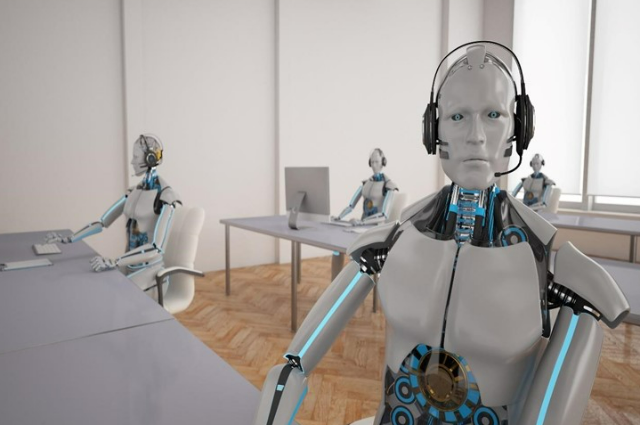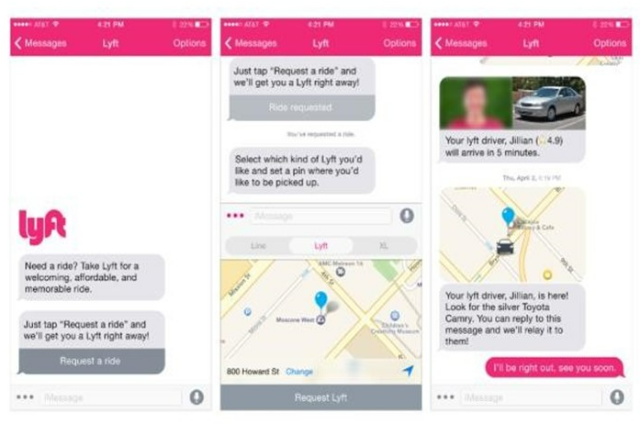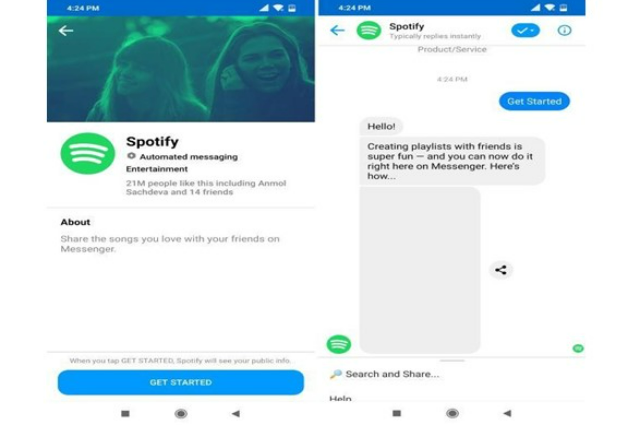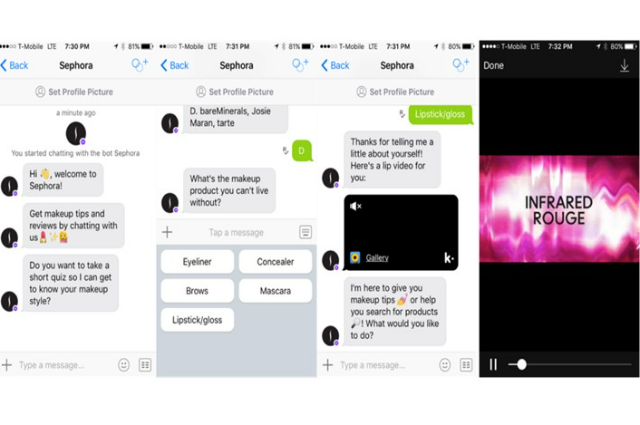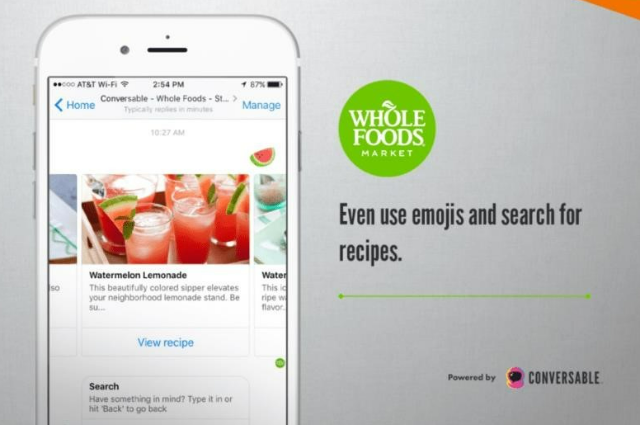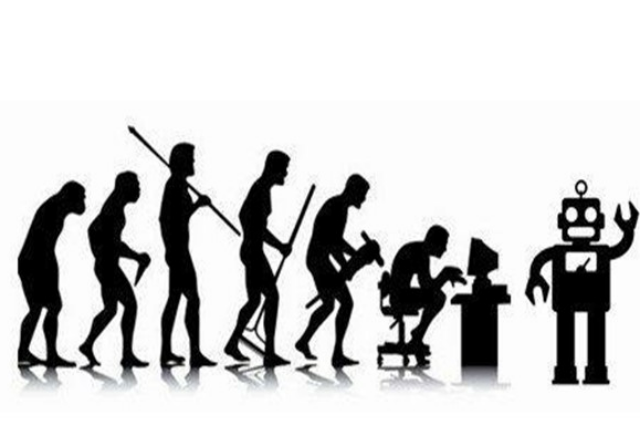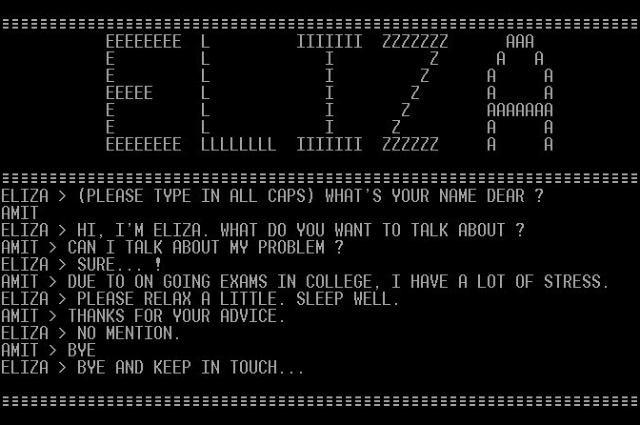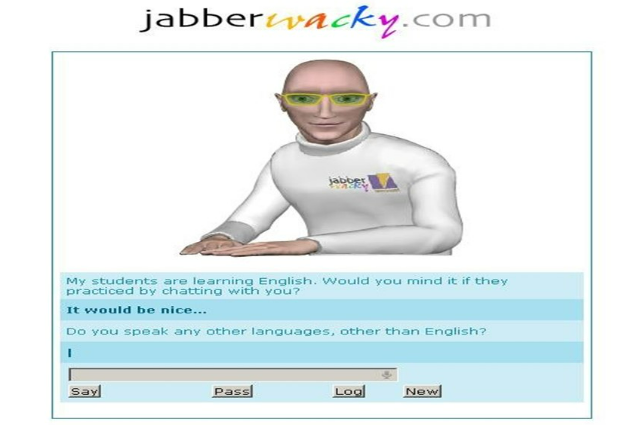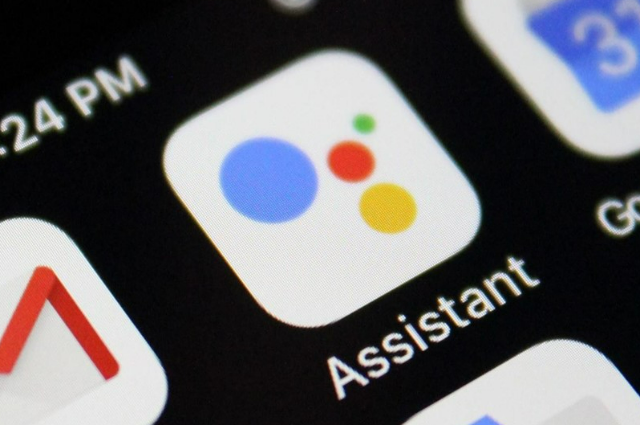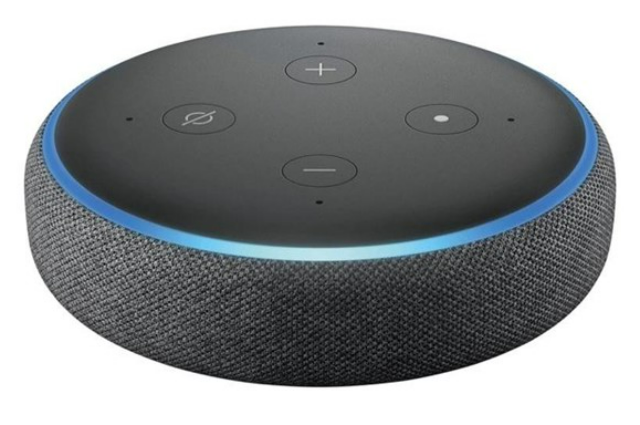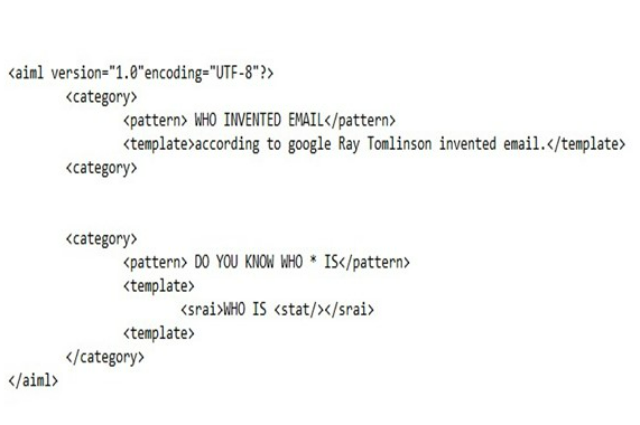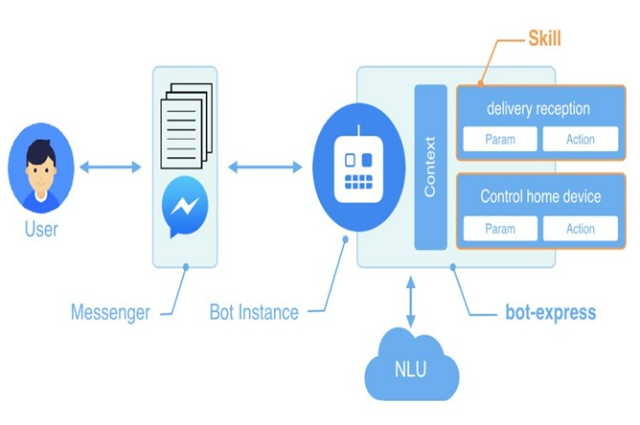“HEYY GOOD DAY!! HOW MAY I HELP YOU?”
Meet Mr. X-Bots, Yup the one who you see in the picture. He’s smart, He’s witty, and understands you much better than your neighbor next door. He’ll take you through the rest of this article as he is the protagonist of this very article.
Mr. X-Bot- Oh thank you for the introduction. I’m a chatbot, some Homo sapiens address me as chatterbot, Well I’m a software application that is utilized to bridge an online conversation between human beings like you and artificial digital software devices like us. And trust me you would feel just like you are communicating to another human, that is exactly why we are made. There’s no human alive with an active internet connection that has not interacted with me. Yes, we have met before, in fact, a couple of times. Can’t remember? No, worries, I can help. Take a close look at the pictures beneath.
Remember while you were surfing through the internet you would have seen some messages asking if there’s anything you are looking for, or messages like how may I help you. That’s actually us
THE CHATTERBOTS…. Looks familiar, I’m pretty sure that the pictures above would have brushed up your memory. See, I told you we have had a convo before.
I don’t want to sound like I’m bragging but WE THE CHATBOTS are second to none when it comes to reaping the best customer experience. Any doubts like how are we robots being able to facilitate world-class customer service, well I’ll prove it, keep reading, (No wonder we are becoming ubiquitous in the world of the internet.)
THE PENTA-PAYBACKS OF USING CHATBOTS TO ENHANCE CUSTOMER -UNDERSTANDING.
1. Impactful commercial acumens
By amassing data from the chatbot discussions, industries can get treasured understandings of user knowledge and be alerted early concerning any problems and any barricades that the clients are exposed to. This means that premature forecast of other problems can transpire or comparable issues can be barred in the coming years. Businesses can examine and scrutinize the statistics from the available conversations, by making use of some progressive customer response analytics gears, such as Thematics which can aid in the decryption of intuitions by rendering and understanding the letter perfect conversation using artificial intelligence text analysis
2. Cut down that pause period.
We can potentially minimize the customer’s interval period and provide them where they want to be in 3 x 10^8 m/s which is the speed of light. Reminisce that flinch-worthy on-hold harmony (especially the onscreen clang sounds, ugh disturbing na!) > these could now be an entity of the past. The chatbot is permanently there. This would take us down to our next point.
3. Always-on customer service
We the chatbots never sleep, we neither go on a hibernation nor aestivation because we are dedicated to offering 24/7 customer sustenance. A cost-operative, yet highly potential way to afford rudimentary support. Some of the chatbots in my family are skilled in using historic chats, and can thereby facilitate performing some of the most mutual tasks such as modifying an invoice slip, reverting to the basic inquiries about account balances, similar to in fact we do it better than the real support representative. Sometimes we get you well that the chatbots can even differentiate your human emotions such as fury, confusion, dread, and bliss. If we detect that the client is in a state of wrath, we immediately hand over the chat conversation to a human to take over, which will provide respite to customers.
4. Tailored human communication
The high-tech chatbots can in fact also profit monogram to the customer knowledge in retrospect. Chatbots accumulate customer data from their communication exchanges. Using the statistics that we have collected, real care representatives can use the statistics to personalize their communications with customers. Customer data can be fed to the mediator in real-time that is when they’re having a word with the customer over the phone, so the mediator/negotiator can deliver applicable resolutions based on up-to-date needs as well as previous connections with the company.
5. Encourage employees
An astonishing perk to artificial intelligence can actually be to cheer and reassure support staff to pay attention to more thought-provoking tasks. As AI has such a prodigious ability to impersonate human behavior, staff may dread thinking that their jobs are at stake. To pacify these fears, companies must show their workforces what’s in it for them. Chatbots are actually fortuitous to sustenance workers to
emphasize more on high-yielding activities rather than their monotonous tasks. For instance, sales representatives can practice artificial intelligence to make an improved suggestion on a transformed contract, insurance providers are more likely to sell a strategy when they can bid personalized guidance.
How are human languages processed by us (chatbots)?
A chatbot is like an ordinary application. There is an app layer, dataset records, and APIs to call other peripheral administrations. Users can with no trouble access chatbots, it adds obscurity for the application to handle.
However, there is a common delinquent that must be undertaken. It can’t understand the plan of the customer. As of now, bots are proficient according to the past information accessible to them. So, most establishments have a chatbot that upholds logs of discussions. Creators employ these logs to analyse what consumers are trying to ask. With a merger of appliance learning tools and models, creators synchronize client explorations and responses with the best apposite answer. For instance, if any shopper is asking about outgoings and earnings, such as, “where is my merchandise payment receipt?” and “I haven’t received a payment receipt?”, both sentences are taken to have the same meaning. If there is no wide-ranging data obtainable, then different APIs can be utilized to train the chatbot.
- WELL TRAINED AND TAMED.
Training a chatbot like me occurs at a significantly sooner and bigger scale than human schooling. While regular patron service representatives are given blue-collar commands which they must be thorough with, a customer sustenance chatbot is sustained with a large number of discussion logs, and from those logs, the chatbot can comprehend what kind of questions need, what kind of answers.
WE THE CHATBOTS ARE NO LONGER THE FUTURE, WE ARE THE PRESENT.
Mr. X-bot: So YOU CONVINCED, OR YOU WANT ME TO SPEAK MORE? Anyway, that’s it for now from the side, now the writer of this article would take over.
It’s proven that ‘N’ no of brands have already started utilizing the perks of chatbots. It is evident that the usage of chatbots will exponentially increase in the years to come.
WHAT DO CUSTOMERS (WE) WANT FROM CHATBOTS?
It is been statistically proven by research that 86 percent of the customers would prefer getting help or required information from a chat box rather than filling up a whole vast form online. I wonder who the 14 percent of people are.
HERE’S THE CHERRY ON THE CAKE.
- This is how brands are using Chatterbots.
1) LYFT - this American Company that offers vehicle services across 644 cities in the US has mastered the art of using bots. You can now book a ride from the app via a chat or even voice, the bot used in the app would let you know the exact location of the driver, send you a snap of the license plate of the vehicle, now isn’t that amazing.
2) SPOTIFY - This musical app with a collection of all new and old songs has also joined the bandwagon of using chatbots to improvise its customer experience. you can now get personalized song playlist recommendations based on your day’s listening activity and mood. the bot also would play you your preferred music and would permit you to share the music in group sessions with your friends.
3) SEPHORA - Ever got confused in choosing the right makeup tutorial, well Sephora’s bot would make it a cakewalk for you. This bot would also assist you by popping up some relevant product reviews and ratings while you are making a purchase in an online store.
4) MASTERCARD - Facebook’s messenger bot makes it simple for the customers to check their account balances, and details related to the transactions, all you gotta do is ask how much did I spend on shopping last July. Now with the availability of the master pass you can make purchases from Subway, Fresh Direct, and the Cheese Factory (Mastercard partners)

5) WHOLE FOODS - this is one of the first brands that initiated the usage of chatbots to enhance customer service. Did you know that a tremendous rollout of this brand is calling out social media ordering and it is run by chatbots? The bots used can handle pizza orders,
eliminating the waiting period. These bots have turned into waiters as they can also offer the exact specialized menu relevant to your cravings. the bots can also recognize emojis.
TOP 5 CHAT DEVELOPMENT COMPANIES.
THE EVOLUTION OF CHATBOTS. (FROM ELIZA TO ALEXA)
ELIZA
ELIZA was the very first chatbot as mentioned above. It was created by Joseph Weizen Baum in 1966 and it uses pattern matching and substitution methodology to simulate conversation.The program was designed in a way that it mimics human conversation. The Chatbot ELIZA worked bypassing the words that users entered into a computer and then pairing them to a list of possible scripted responses. It uses a script that simulated a psychotherapist. The script proved to be a significant impact on natural language processing and unnatural intelligence, with copies and
variants protruding up at academies around the country.However, Weizenbaum was troubled by the reaction of users. He intended ELIZA to be a mere caricature of human conversation, yet suddenly users were confiding their most profound thoughts in ELIZA. Experts were declaring that chatbots would be indistinguishable from humans within a small number of years. Weizenbaum rejected the notion that machines could replace human intellect. He argued instead that such devices were just tools, and extensions of the human mind. He further stressed that computers’ understanding of language was entirely dependent on the context in which they were used. Furthermore, Weizenbaum argued that a more general computer understanding of human language was not possible.In the decades that followed, chatbot makers have built upon Weizenbaum’s model to strive for more human-like interactions. Passing the Turing test has grown into a common goal, which tests new bots’ conversational talents against a board of human judges. The hardest thing in the Turing test issue is that there’s no limit on what people can discuss.
PARRY
Parry was constructed by American psychiatrist Kenneth Colby in 1972. The program imitated a patient with schizophrenia. It attempts to simulate the disease. It is a natural language program that resembles the thinking of an individual.PARRY works via a complicated system of assumptions, attributions, and “emotional responses” triggered by changing weights assigned to verbal inputs. To validate the work, PARRY was tested using a variation of the Turing test. It was in the early seventies when human interrogators, interacting with the program via a remote keyboard, were weak with more than random accuracy to distinguish PARRY from an original paranoid individual.Fifty years ago Kenneth Mark Colby was the only psychiatrist thinking about how computers could contribute to the understanding of mental illness. He thus began the project “Overcoming Depression” which lasted until his death in 2001.
Jabber wacky
The chatbot was created by developer Rollo Carpenter in 1988. It aimed to simulate a natural human conversation in an entertaining way.Jabber wacky has led to other technological growth. Some individuals use it for academic research purposes through its webpage since its origin.The chatbot is considered to use an AI technique called “contextual pattern matching.”
Dr. Sbaitso
Dr. Sbaitso is a Chabot created by Creative Labs for MS-Dos in 1992.It is one of the earliest efforts of incorporating A.I. into a chatbot and is recognized for its full voice-operated chat program.The program would converse with the user as if it was a psychologist. Most of its
responses were along the lines of “Why do you feel that way?” rather than any sort of complicated interaction.
A.L.I.C.E. (Artificial Linguistic Internet Computer Entity)
A.L.I.C.E. is a universal language processing chatbot that uses heuristic pattern matching to carry conversations. In 1995, Richard Wallace pioneered the construction of ALICE. It was formerly known as Alice bot because it was the first to run on a computer by the name of Alice.The program works with the XML schema known as artificial intelligence markup language (AIML), which helps specify conversation rules. In 1998, the program was edited in Java, and in 2001 Wallace printed an AIML specification. From there, other developers drafted free and open sources of ALICE in different programming languages and a variety of foreign languages.The program simulates chatting with a real person over the Internet. Alice is a young-looking woman in human years and tells a user her age, hobbies, and other fascinating facts, as well as answering the user’s dialog.
Smarter Child
The Smart Child was in many ways a precursor of Siri and was developed in 2001.The chatbot was available on AOL IM and MSN Messenger with the strength to carry out fun conversations with quick data access to other services.It suites Microsoft also built its own Smarter Child, years later after most people stopped using AIM which targeted 18- to 24-year-olds in the U.S. the account suited particular conversation.
HEY Siri!!
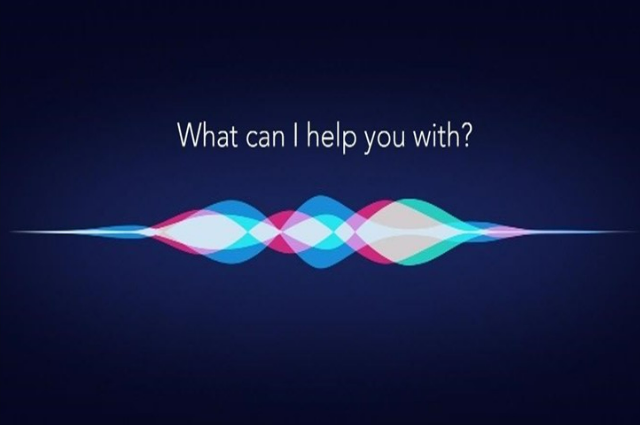
Siri was formed by Apple for iOS in 2010; it is an intelligent personal assistant and learning navigator that uses a natural language UI. It paved the system for all AI bots and PAs after that.A patent application by the United States Patent and Trademark Office details a new Apple service where users could make inquiries and conversations with Siri through Messages. The new patent is similar to a published late last year, but now includes deeper integration with audio, video, and image files. Similar to other texting and Facebook Messenger Apple’s patent describes a Siri that could perform current duties without the user having to chat aloud. That could be helpful in several public spheres. They could reply to text, audio, images, and video when transferred to it by the user. Apple said this would result in a more fruitful interactive experience between a consumer and a digital assistant.The patent provides a few examples of a conversation held between Siri and a user in Messages, with the user asking questions.
Google Assistant
Google Now was launched at Google Inch in 2012. It answers questions, performs actions through requests made to a set of web services and makes recommendations. It was part of a package of updates and UI modifications for mobile search, which included a female-voiced portable assistant to compete with Apple’s Siri. Google Now was initially a way to get contextually appropriate information based on location and time of the day. It evolved to become much more complicated and elaborate, with a broad range of content categories delivered on cards. Sometimes it refers to us as predictive search. Currently, it’s built for use in smartphones and has been upgraded to accommodate several features. Google Now was replaced by Google Assistant in 2017. Today, the assistant is part of a more aggressive Google search growth strategy. The idea is simple, Google wants to provide information in an easy-to-read format before you even know you need it.
Alexa
Alexa is a brainy special assistant technologically advanced by Amazon. It was familiarized in 2014 and is now assembled in to devices such as the Amazon Echo, the Echo Dot, the Echo Show and more. There is also an Alexa app and more devices from third-party builders that have Alexa built in to them. All you have to do is say “Alexa, play some music” or “Alexa, find me an Italian restaurant” and she will help you out. Using nothing but the sound of your voice, you can search the Web, play music, create to-do or shopping lists, set alarms, stream podcasts, play audiobooks,
get news or weather reports, control your smart-home products, and more. To add to the capabilities of any Alexa-enabled device, Amazon allows developers to build and publish skills for Alexa using the Alexa Skills Kit (ASK). You can download assistance for free with the Alexa app.
THE INTERNAL WORKING OF A CHATBOT.
The Chatbots slog based on three cataloging methods:
1) Pattern Matches:
Bots utilize pattern matches to group the text and it produces a suitable response from the clients. “Artificial Intelligence Markup Language (AIML), is a standard structured model of these Patterns.A simple example of Pattern matching is;
Then the machine gives the following output:
- Human: Who invented the email?
- Robot: According to Google, Ray Tomlinson invented email.
The Chatbot knows the appropriate answer because her or his name is in the related pattern. Similarly, the chatbots react to anything relating it to the correlate patterns. But it can’t go past the related pattern. To take it to a progressive stage, algorithms can help.
For every sort of question, a remarkable pattern must be accessible in the database to give a reasonable response. With a number of pattern combinations, it makes a hierarchical structure. We utilize algorithms to lessen the classifiers and produce a more reasonable structure.
2) Natural Language Understanding (NLU)
This NLU has 3 specific concepts as follows:
- Entities: This essentially represents an idea to your chatbot. For example, it may be a payment system in your E-commerce chatbot.
- Context: When a natural language understanding algorithm examines a sentence, it doesn’t have the historical backdrop of the user’s text conversation. This implies that, if it gets a response to a question it has been recently asked, it won’t recall the inquiry. So, the phases during the conversation of chat are separately stored. It can either be banners like “Ordering Pizza”. Or could include other parameters like “Domino’s: Restaurant”. With context, you can easily relate expectations with the necessity of comprehending the last question.
- Expectations: This is what a chatbot must fulfill when the customer says sends an inquiry. Which can be the same for different inquiries. For example, the goal triggered for, “I want to purchase a white pair of shoes”, and “Do you have white shoes? I want to purchase them” or “show me a white pair of shoes”, is the same: a list of shops selling white shoes. Hence, all users typing text show a single command which is the identifying tag; white shoes.
3. Natural Language Processing (NLP)

(NLP) Natural Language Processing Chatbots finds a way to convert the user’s speech or text into structured data. Which is then utilized to choose a relevant answer. Natural Language Processing includes the following steps;
- Tokenization: The NLP separates a series of words into tokens or pieces that are linguistically representative, with a different value in the application.
- Sentiment Analysis: It will study and learn the user’s experience, and transfer the inquiry to a human when necessary
- Normalization: This program model processes the text to find out the typographical errors and common spelling mistakes that might alter the intended meaning of the user’s request.
- Named Entity Recognition: The program model of a chatbot looks for different categories of words, similar to the name of the particular product, the user’s address or name, whichever information is required.
- Dependency Parsing: The Chatbot searches for the subjects, verbs, objects, common phrases, and nouns in the user’s text to discover related phrases that users want to convey.
CONCLUSION
In my perspective, chatbots or smart assistants with artificial intelligence are dramatically altering businesses. There is an extensive range of chatbot-building platforms that are available for innumerable enterprises, such as e-commerce, retail, investment firms, leisure, travel, healthcare, and so on. Many connoisseurs expect chatbots to remain growing in popularity. In the future, AI and ML will continue to progress, offer new capabilities to chatbots and introduce new levels of text and voice-enabled user experiences that will transform CX. These improvements may also affect data collection and offer deeper customer insights that lead to predictive buyer behaviors. Voice services have also become common and necessary parts of the IT ecosystem. Many developers place an increased focus on developing voice-based chatbots that can act as conversational agents, understand numerous languages and respond in those same languages. Chatbots can reach out to a large audience on messaging apps and be more effective than humans. They may develop into a capable information-gathering tool in the near future.
. . .
REFERENCES:
- www.drift.com The Ultimate Guide to Chat Bots-Drift
- www.expert.ai The power of chatbots explained-Expert.ai
- www.oracle.com What is a chatbot- Oracle India
- proutsocial.com The Complete Guide to Chatbots for Marketing
- www.senseforth.ai What is the Chatbot architecture?
- dzone.com The significance of chatbots-D Zone Al
- bigdata-madesimple.com An overview of the architecture of a chatbot.

